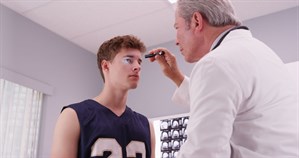

2 credits (3 ECTS Credits)

*Photo By Gonzalo Facello From Pexels
How can optometrists successfully work with athletes in baseball, tennis, golf, basketball, and virtually every other sport to help them achieve a much higher degree of performance? How can optometrists facilitate recovery from sports related brain injuries and get back to a high degree of performance again? The difference between the average athlete and the superstar is the difference in their visual abilities. This course will teach the participants how to identify the manner in which visual problems impact sports performance and how to diagnose and treat these problems.
The course includes 20 hours of pre-recorded lectures. Each topic is taught in a separate pre-recorded lecture. After viewers have watched 10 hours of the lectures, a live Zoom session will be held with the professor to discuss key topics and answer any questions. A second Zoom session will be held at the end of the course.
After successful completion of the course, students will be able to:
• Final exam for students seeking academic credit
For information about registration, guest lecturers, and dates PRESS HERE
For more information:
Please contact: international@hac.ac.il
Program Director: Dr. Liat Gantz
Program Administrator: Ms. Alisa Gania
Department Chairperson: Dr. Hadas Ben-Eli